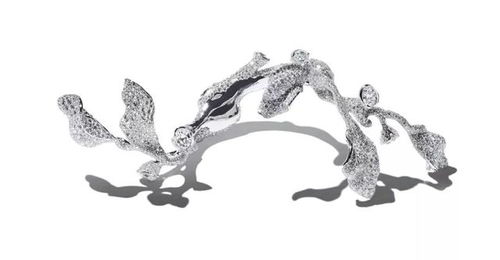Content:
Introduction: Saltwater fly fishing is an exhilarating and challenging sport that requires a unique set of skills and equipment. One of the most crucial tools in your arsenal is the saltwater fly rod. Whether you're targeting marlin, tarpon, or bonefish, knowing how to use your saltwater fly rod effectively can make all the difference in your fishing success. In this article, we'll delve into the essential techniques for using a saltwater fly rod to help you become a more proficient angler.
Choosing the Right Saltwater Fly Rod: Before you can start using your saltwater fly rod, it's important to choose the right one for your fishing style and the species you're targeting. Here are some factors to consider when selecting a saltwater fly rod:
Length: Saltwater fly rods typically range from 8 to 12 feet in length. Longer rods are better for casting over long distances and for targeting larger fish, while shorter rods are more maneuverable and ideal for close-quarters fishing.
Action: The action of a fly rod refers to how it bends when pressure is applied. Fast-action rods are ideal for casting heavier flies and for targeting powerful fish, while slow-action rods are more forgiving and better suited for lighter lines and delicate presentations.
Line Weight: The line weight of your rod should match the weight of the fly line you plan to use. For example, a 9-weight rod is designed to cast a 9-weight fly line, which is suitable for most saltwater species.
Material: Saltwater fly rods are usually made from materials like graphite or composite, which offer a good balance of strength, flexibility, and durability.
Basic Casting Techniques: Once you have the right rod, it's time to learn the basics of casting. Here are some key techniques to master:
Backcast: Begin by gripping the rod with a comfortable overhand grip, holding the rod at a 45-degree angle to your body. Move the rod back in a smooth, continuous motion, allowing the line to unwind from the reel. The goal is to achieve a tight loop at the end of the backcast.
Forward Cast: After completing the backcast, allow the line to unwind and then accelerate the rod forward, stopping abruptly at the end of the cast. This creates a tight loop that will carry the fly forward.
Roll Cast: For shorter distances or when you need to cast around obstacles, the roll cast is a valuable technique. Hold the rod low and make a series of small, quick flicks with the rod tip to propel the line forward.
Tug Cast: When casting into the wind, a tug cast can help you achieve a tight loop and keep your fly in the strike zone. As you begin the forward cast, pull the line with your hand as you accelerate the rod forward.
Fly Line Management: Proper fly line management is crucial for successful saltwater fly fishing. Here are some tips:
Mending: Mending is the process of moving the line across the water's surface to even out the tension and create a natural presentation. It's especially important when fishing in currents or when dealing with wind.
Line Control: Keep your line under control by maintaining a tight loop at the end of your cast. This will help you make accurate casts and keep your fly in the strike zone.

Line Management: After each cast, retrieve the line from the water and wind it onto your reel in a controlled manner. This will prevent tangles and ensure you're ready for your next cast.
Reading the Water and Fish Behavior: Understanding the behavior of the fish you're targeting and the characteristics of the water you're fishing is essential for successful saltwater fly fishing. Here are some tips:
Study the Water: Observe the currents, tides, and structure in the area to understand where the fish are likely to be.
Fish Behavior: Pay attention to the fish's behavior, such as their feeding patterns and movement. This will help you anticipate their strikes and make more precise casts.
Adaptability: Be prepared to adapt your techniques based on the conditions and the fish's behavior. Sometimes, a slight change in your approach can make all the difference.
Conclusion: Using a saltwater fly rod effectively requires practice, patience, and a deep understanding of the techniques and strategies involved. By choosing the right rod, mastering the casting techniques, managing your fly line, and studying the water and fish behavior, you'll be well on your way to becoming a proficient saltwater fly fisherman. Remember, the key to success is to keep learning and adapting your approach to the ever-changing conditions of the saltwater environment. Happy fishing!












